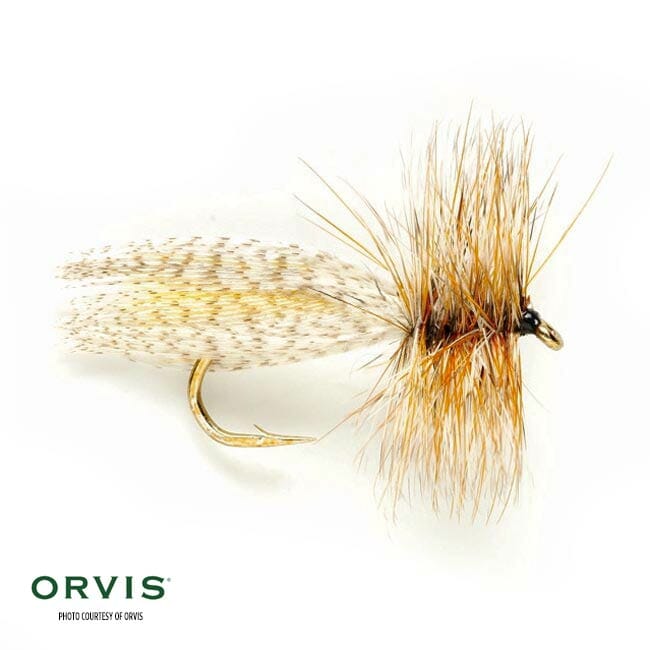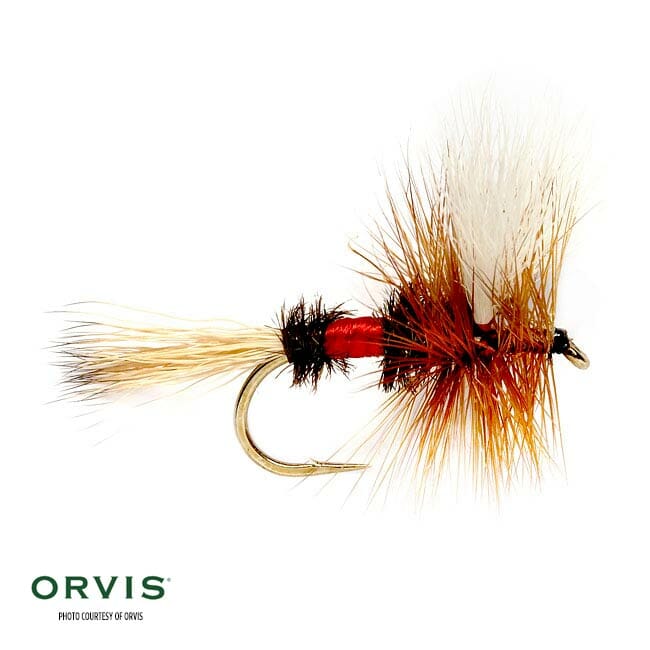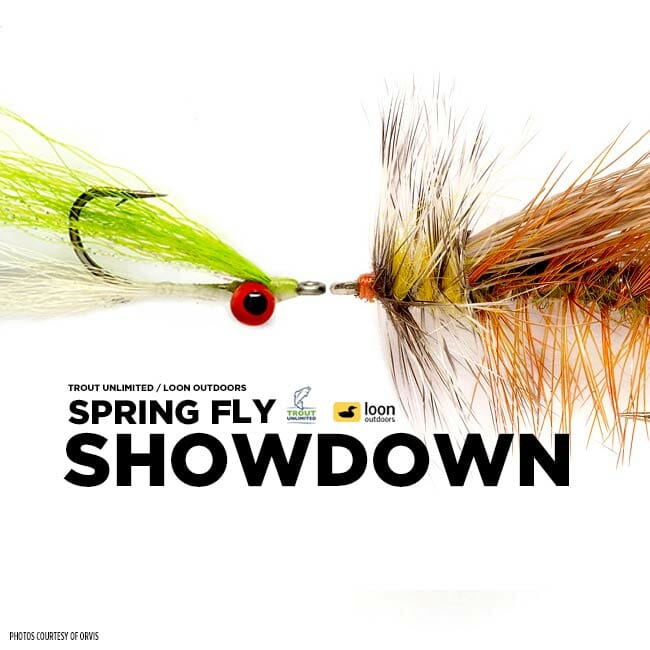Editor’s note: The biggest sporting event of spring, the NCAA basketball tournament, is simply not happening this year thanks to the coronavirus pandemic. Anglers, though, can still effectively “social distance” and go fishing in areas where it’s safe and legal to leave the house, using their favorite flies. In that spirit, TU and our friends at Loon Outdoors are teaming up to offer the Spring Fly Showdown—a vote-to-win tournament featuring some of the best-known fly patterns out there. Over the course of the next two weeks, we’ll pit great flies against each other in a “March Madness”-style bracket. You pick the winners of each “game,” and any who vote will be entered in a contest to win great Loon fly-tying equipment.
The “tie-in” contests are done, and we’re down to the “Sweet 16,” if you will. A total of eight flies will battle today for the chance to move into the next round, starting with a face-off between two old-school classics: The Hornberg and the Royal Wulff.
First tied in the 1920s, the Hornberg is an old-school classic pattern that can be fished by dry or wet on the swing, or even stripped back like a baitfish imitation.

Named for the man who tied it first, Frank Hornberg, it features classic materials, like bucktail and mallard (or wood duck for the purists). Fished wet, it’s an excellent attractor/swinger. I’ve had some excellent days on the Firehole River using the Hornberg. Fished dry, it probably imitates a caddisfly more than anything else.
The beauty of the Hornberg? You can fish it dry and then swing it in the current on the same cast. Versatility at its classic finest.
There are a lot of great fly patterns that have lasted the test of time, but perhaps the fly that best represents American dry-fly fishing is one that’s been around for nearly a century. The Royal Wulff, named for legendary angler Lee Wulff, is steeped in old-school angling culture—it was inspired by the Royal Coachman, a lighter more delicate dry-fly attractor, but one that wasn’t as durable or visible in heavy water.

The Royal Wulff and all its variants have one thing in common—the peacock herl body and a center “strip” of colored floss (usually red, but other colors are common, too). The fly is a true attractor. It doesn’t accurately represent any specific bug, but it seems to appear to trout like a source of protein that might imitate anything from a caddis to a stonefly to a mayfly. It’s a versatile fly that just looks “buggy.” And it works, even a century later.



